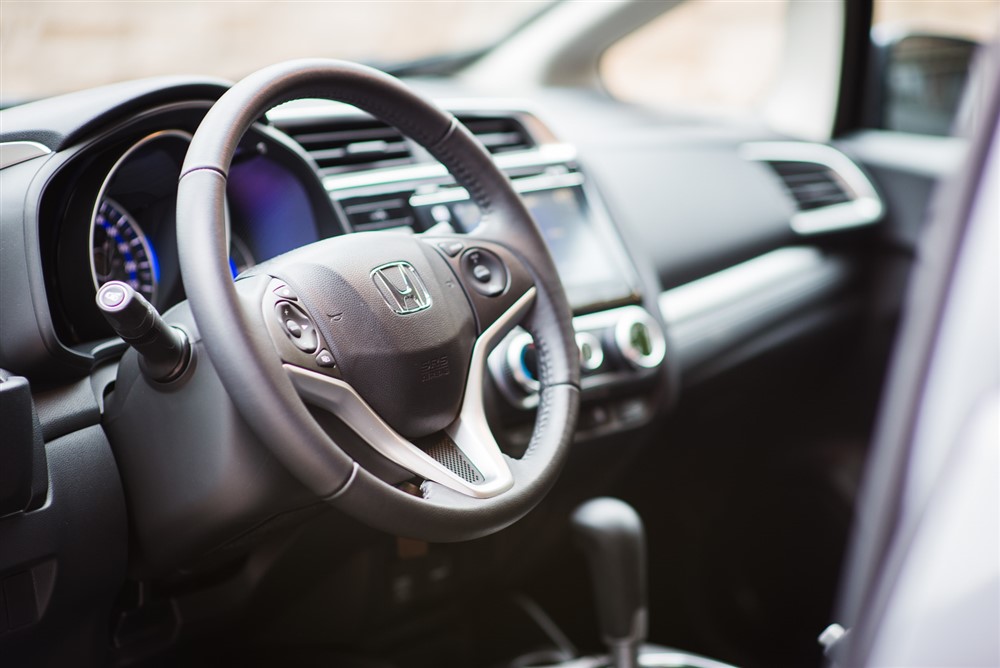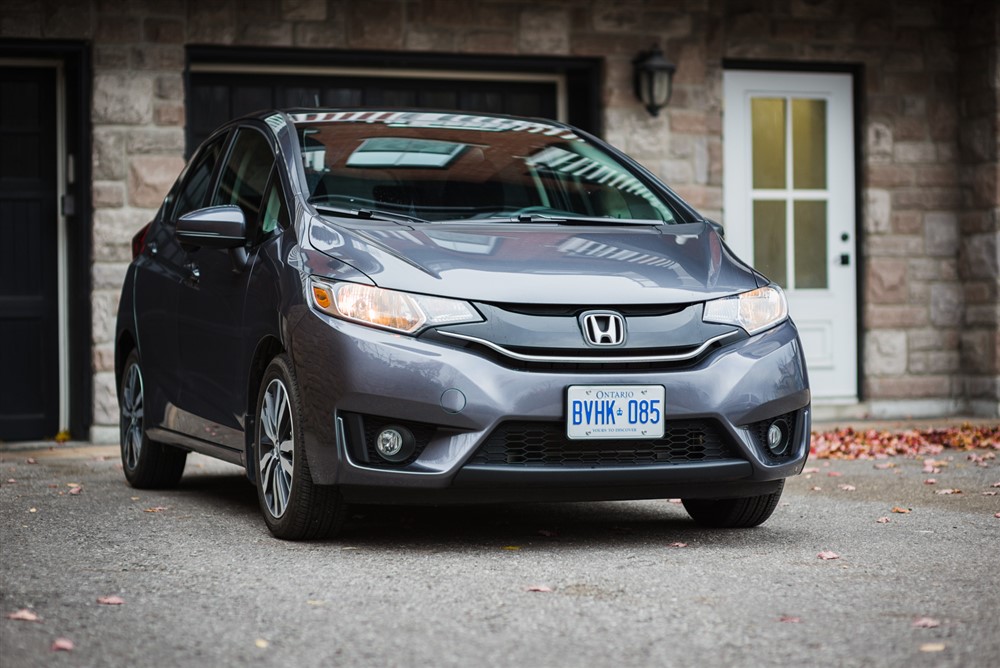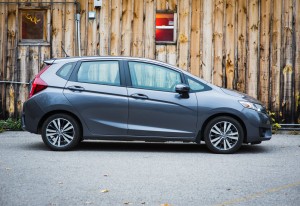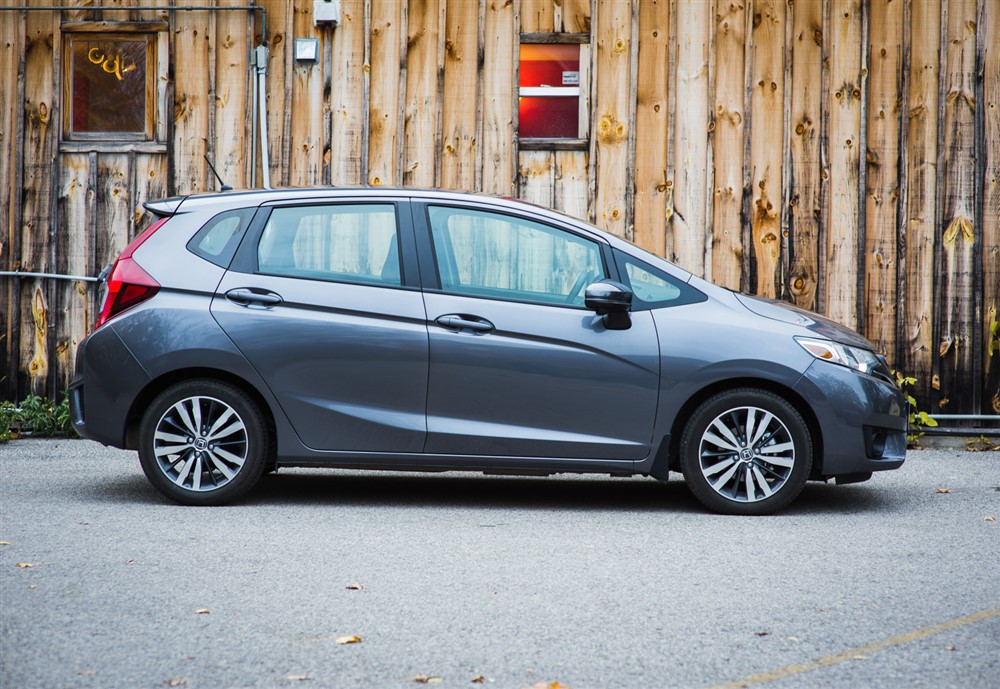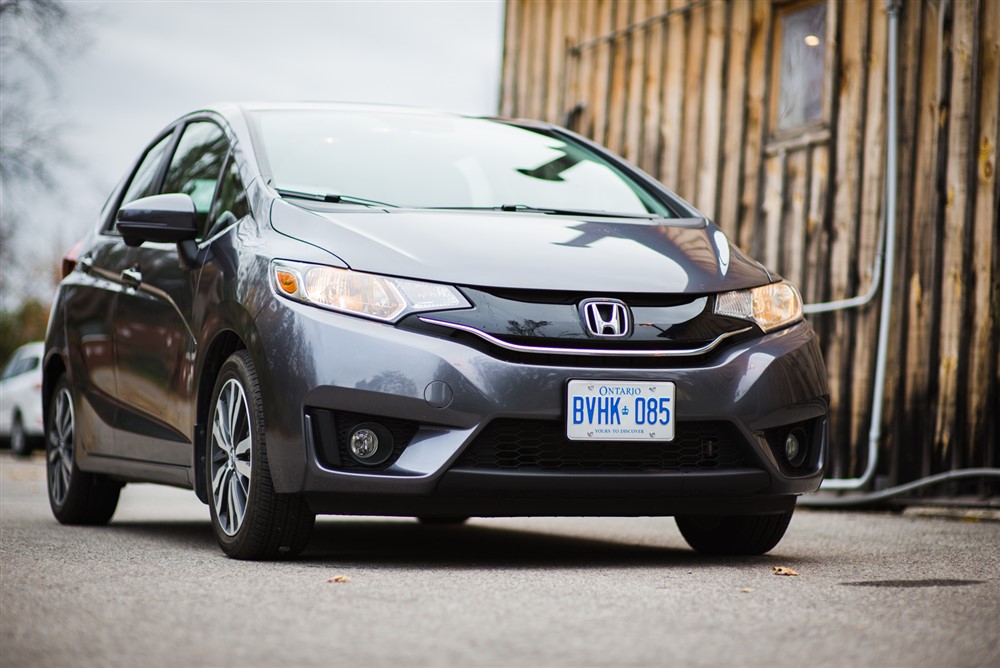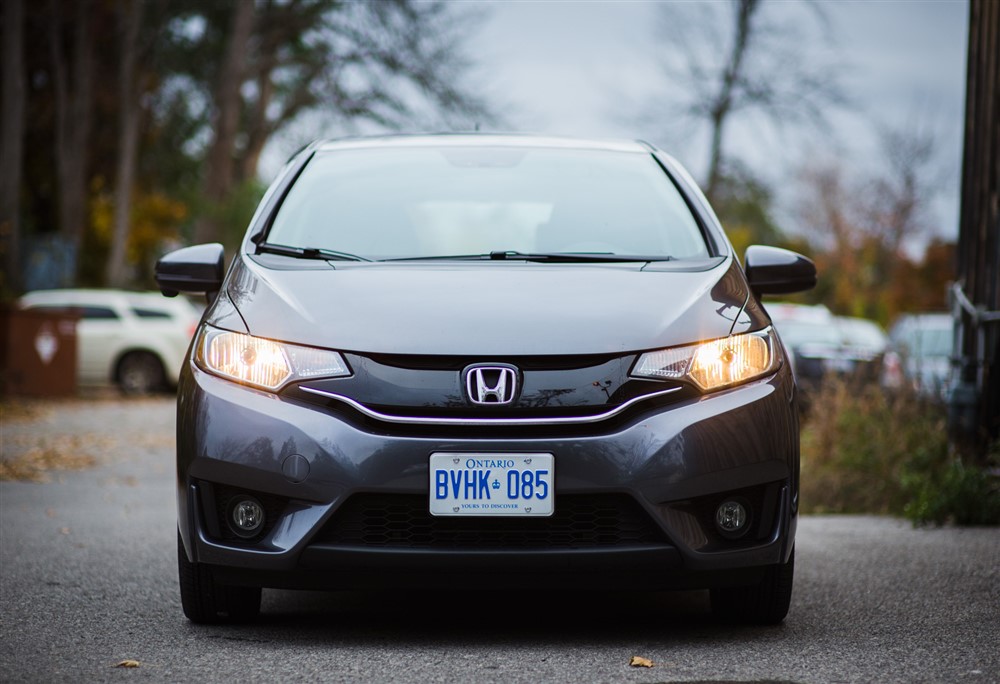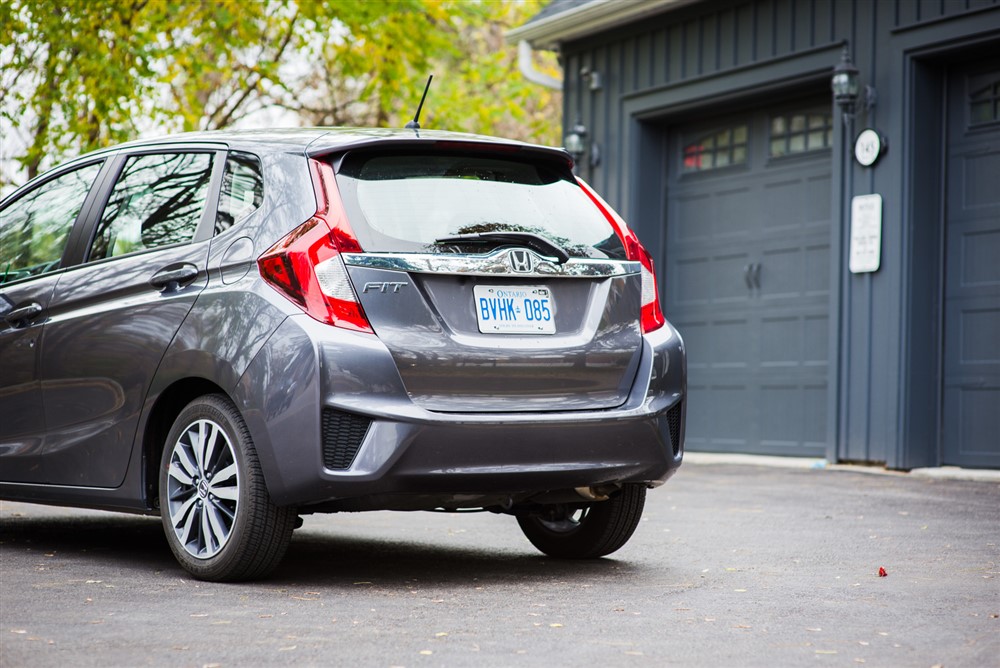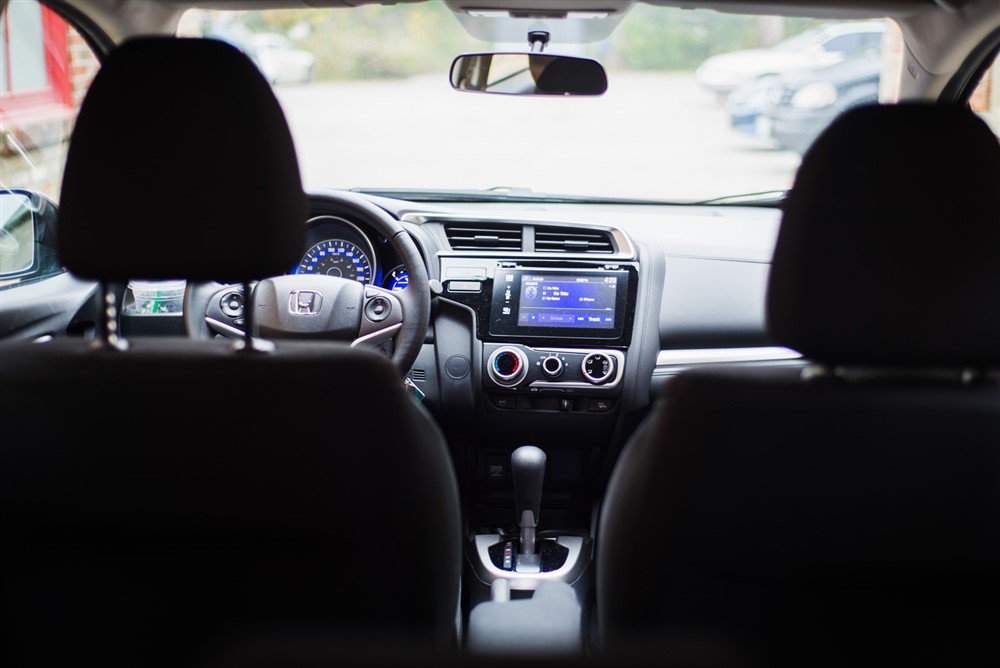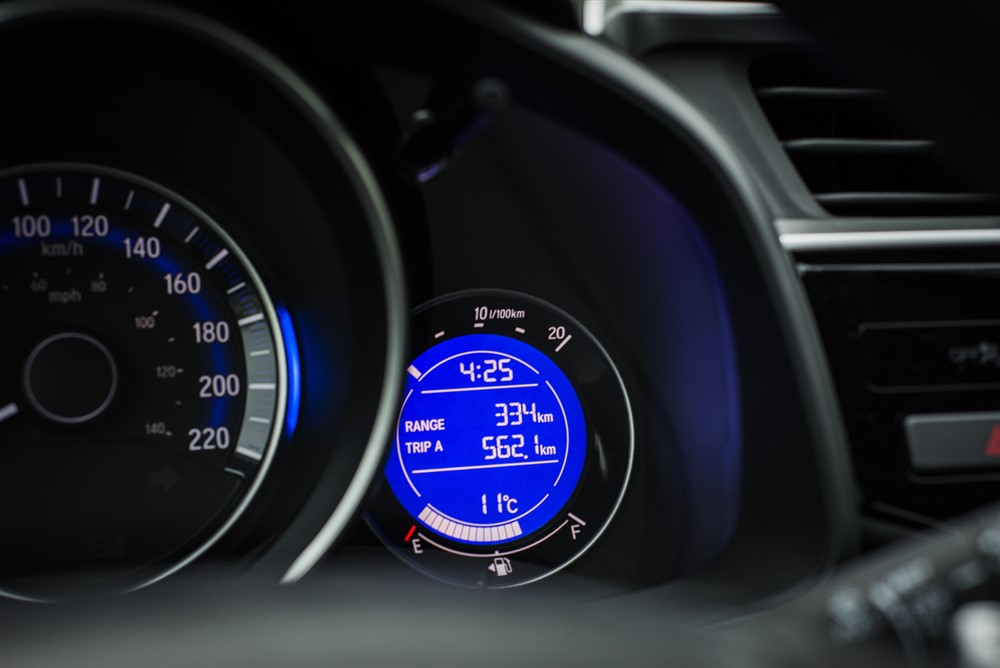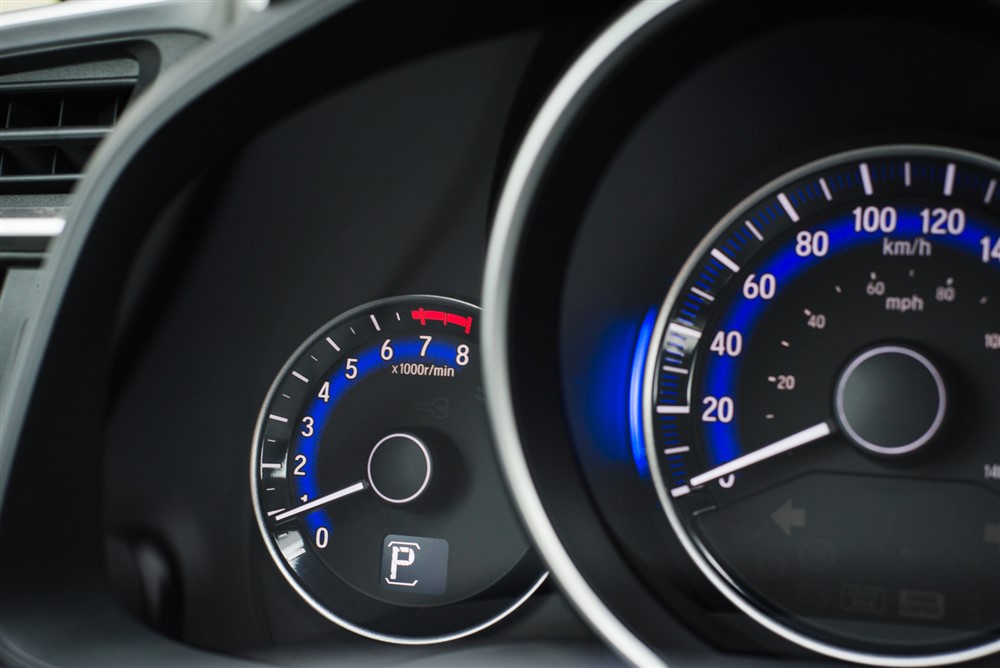I will always remember the Honda Fit as the subcompact that really defined the segment for me. First introduced in 2006 with its fold flat seats, fun driving dynamics, and tendency to sip fuel, the Fit was an instant hit that brought mainstream attention to the segment. Now in its third iteration, the Honda Fit has seen its first major redesign. Based on an all-new platform for this model year witha radical new design, the new Fit certainly has some big shoes to fill. On first glance, my 2015 Honda Fit EX certainly does look promising and enticing.
The front end receives a redesign that I can only describe as looking like Iron Man’s mask – no, seriously. Featuring a one-piece grille, slimmer lights, and larger air ducts, the Fit’s front end is the certainly the most dramatic aspect of the car. Frankly, I’ve grown quite fond of it. Compared with the last generation, the new Fit is 1.6 inches shorter, but actually has a 1.2 inch longer wheelbase. Honda’s engineers somehow worked their magic to allow for 4.8 inches of more legroom. It’s not that the outgoing model was lacking in legroom, but more is always welcome. However, there is one caveat for the added comfort of your passengers. The new Fit has less cargo space – but I’ll get to that later.
My tester came draped in Modern Steel Metallic Paint, certainly one of Honda’s more conservative offerings for the Fit (personally, I would have gladly rocked the Milano Red). Stepping inside, owners will be happy to know that Honda has significantly reworked the interior as well. Along with the redesign comes an array of soft touch surfaces, and faux aluminum trim. To keep up with the times, Honda’s also included their Display Audio System found in numerous other products (and no, it still doesn’t have an analogue volume knob).
Other than auto climate control and navigation, the Fit EX offers all the bells and whistles of a car costing far more than its $19,195 asking price. Also included are the Fit’s trademark “Magic” seats. While Honda’s engineers did have to sacrifice some leg room for that extra storage space – specifically 4 cubic feet, owners will be happy to know that once the 60/40 magic seats have been folded flat, the rear cargo space is still top of the subcompact segment at 53 cubic feet. With the seats up, storage space is limited to 17 cubic feet.
Under the hood, the Fit is powered by Honda’s new 1.5L Earth Dreams motor. While displacement remains the same, the new engine adds direct injection, dual overhead cams, and 13 extra horses compared to the old 1.5L. All of this equates to efficiency ratings of6.8L/100KM of combined driving. These are pretty accurate estimates, as I saw averages of 5.8L/100KM in highway driving and 7.5L/100KM in the city during my time with the Fit. To help achieve those numbers, Honda’s tacked on an extra cog for those who opt to row their own, and a CVT in lieu of the 5-speed automatic from the previous generation.
During my week with the Fit, I found that the CVT did dull the driving experience of the car. Although Honda does include a “Sport” mode which sharpens the throttle response and gets the transmission to hold onto each ratio a little bit longer. Slowing down while the selector is in “Sport” causes for a very jolty experience as the CVT simulates downshifts of a traditional automatic transmission. You’re honestly better off leaving the car in Drive and forgoing the sport mode altogether. In fact, if you can get away with it, grab the Fit in the manual transmission and save yourself some coin and up the fun factor with the car too.
The new platform, more powerful engine and diminutive size of the car do make for a seriously fun little car to zip around the city in. During my week with the car, I found the steering feel to be a bit too light, but it was still just as direct and responsive as a modern Honda should be. Getting up to speed is always an interesting experience as the 1.5L isn’t exactly quiet. Sitting in the cabin, you can hear it wailing as the car accelerates. Some consider it part of the charm of what makes a Fit a Fit, but I found it to get tiring really quickly. Luckily, Honda has made sound deadening efforts in the cabin and if you hit the green “ECON” button, the car does quiet down a little bit (at the expense of some performance).
With the subcompact segment swelling in numbers, the competition for your hard earned dollars has really started to heat up. The all-new Honda Fit offers a little bit of something for every car purchaser’s needs: it’s practical, comfortable, efficient and somewhat fun. In its third generation, the Fit still makes a compelling case for itself and at the very least should be an option that every potential subcompact buyer looks at prior to making a decision.


